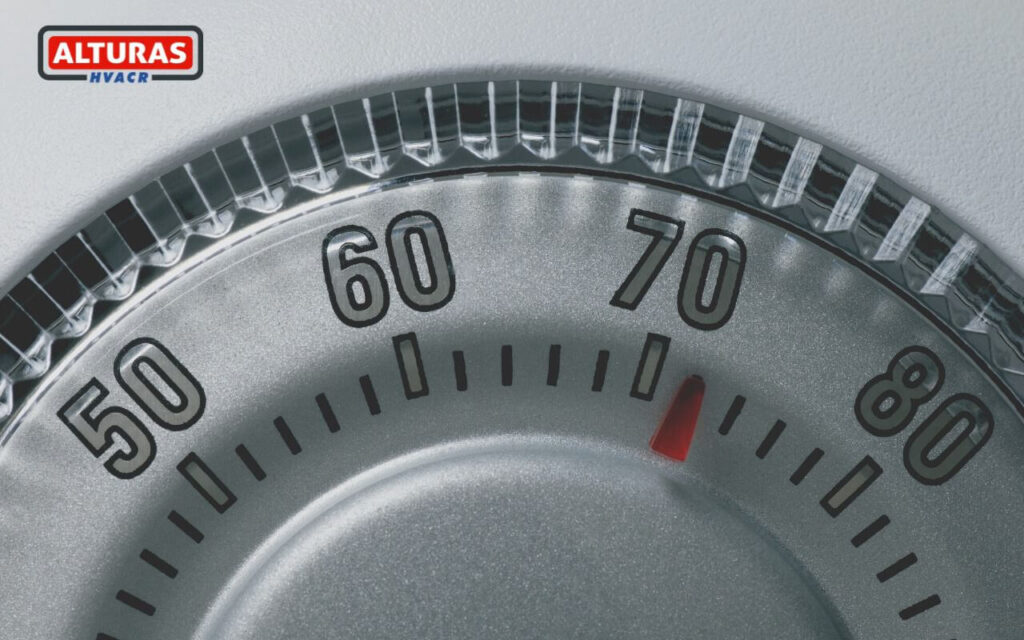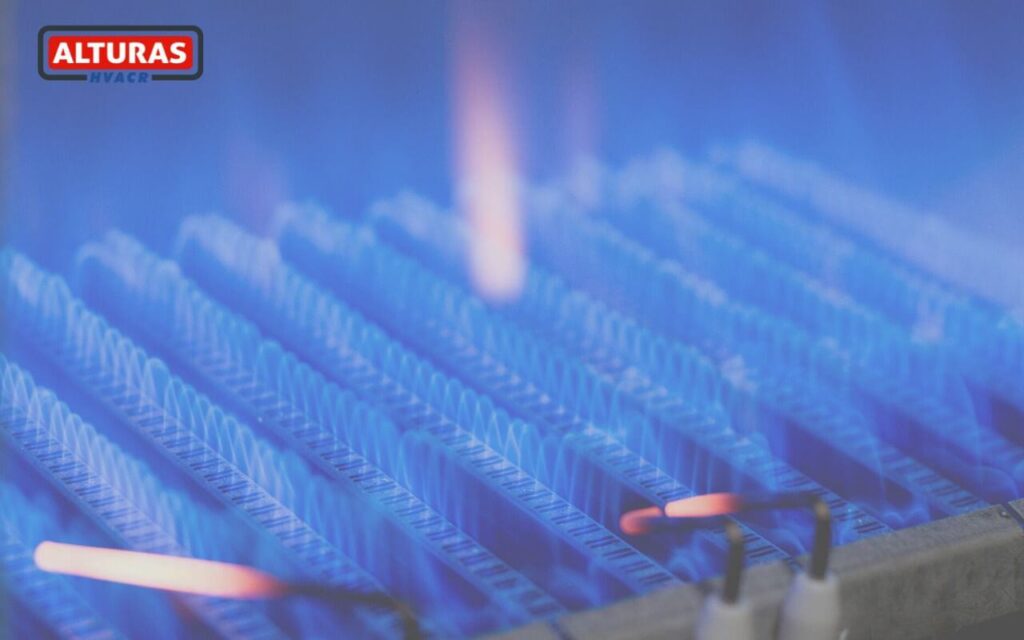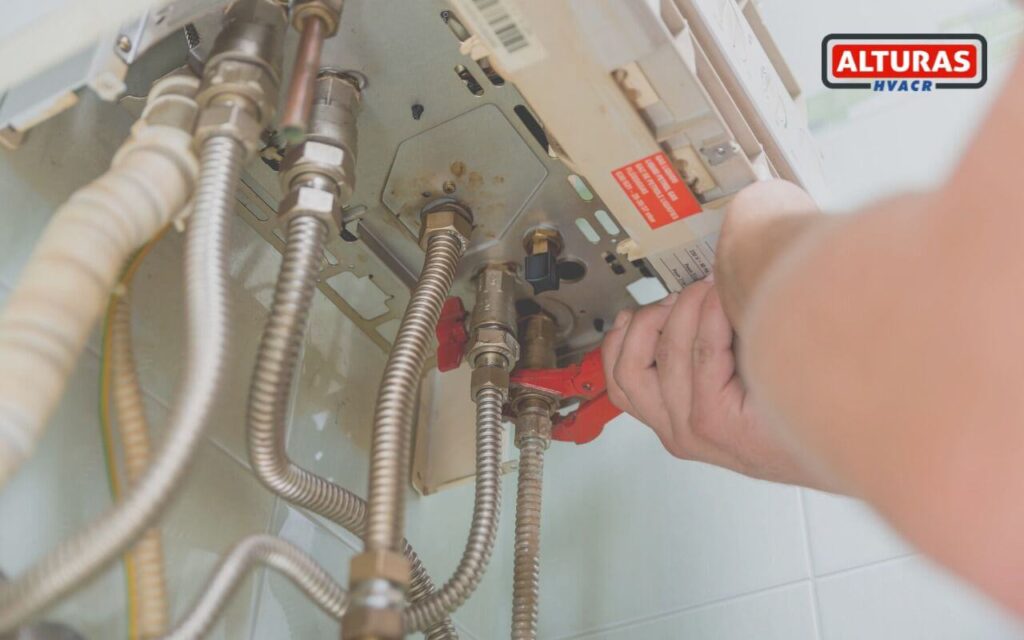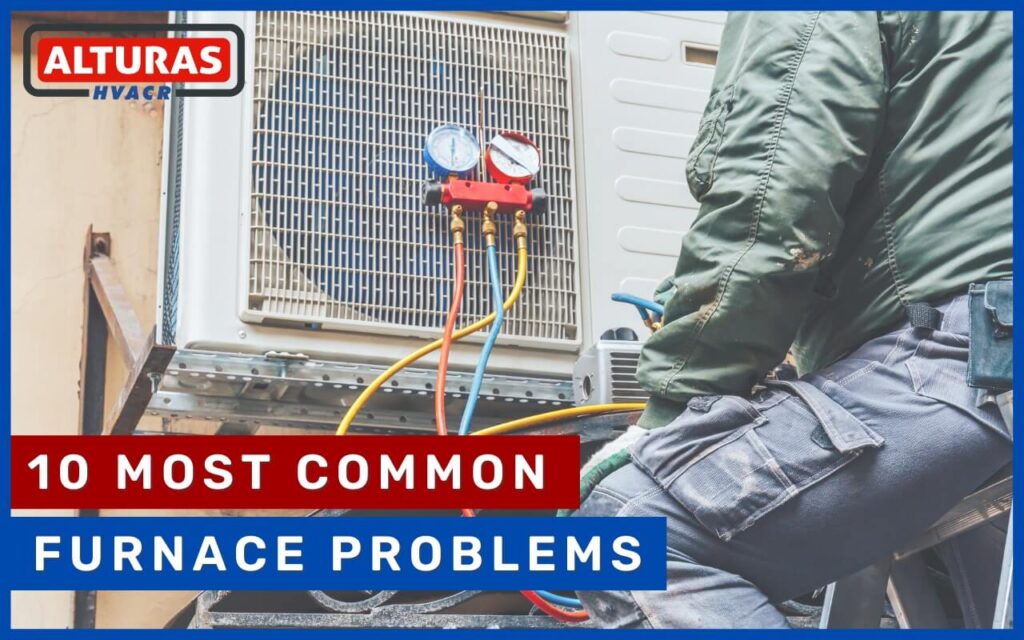Nothing can be worse than waking up cold in the middle of the night. It can be one of those things that you just need to pull the covers up. It is a completely different issue in case your furnace is not working properly or not working at all. With a little experience, you can always consider and repair your furnace yourself at home.
This blog will make you feel like you have the knowledge to tackle some furnace repairs yourself.
Most Common Furnace Problems and Fixes
No matter what you have, if it is a conventional gas furnace or a high-efficiency gas furnace a proper understanding of how your furnace and heating system functions are really very important. You would always need to understand the basic workings of the appliance, so you know what to look for when there is something wrong.
Let’s have a look at a conventional furnace and some of the tips to solve its more common problems. Also check our Furnace Installation guide here.
Check your thermostat

You must always check your thermostat to make sure it’s ON. You may feel like it sounds silly, but you must always check the thermostat to make sure it is set on “heat” and that it is set at least five degrees above room temperature. You might be surprised how many service calls are made without checking for this issue.
Here are a few thermostat checks to conduct yourself by following these steps:
Step 1:
You must check the battery on the thermostat. You might feel like changing the batteries on your thermostat. In case your home’s thermostat unit runs on batteries, always make sure that you are changing them at least once a year, or as needed.
Step 2:
Open the thermostat and gently blow any dust or debris that has clogged it.
Step 3:
Always make sure that the date and time are correct on electronic or programmable models – the system may be on a timer.
Step 4:
Check the breaker. If it is on, turn off the breaker and check the fuse for the furnace.
The furnace is Not Producing Heat
For this issue, you must try to reset the home circuit breaker. There is any number of minor reasons why this could occur. First of all, you will need to confirm that the thermostat is set to “Heat.” Then, try moving the dial-up or down a few degrees to check if a noticeable difference is felt.
If you see no result, you must check to see if perhaps a circuit breaker or fuse was tripped or blown.
How to Test Home Breakers?
For checking for this issue you must go to your home’s breaker panel and look for the circuit that is actually controlling the entire furnace. You are looking to see whether it is thrown to the “Off” position, or whether it is in the middle.
1. You will have to manually test the breaker. Flip it back and forth.
2. You will have to make sure it is staying in the “On” position.
This will reset the breaker. In case this does not do the work, you might have a problem with either the wiring in the circuit or the circuit breaker itself.
Furnace is Not Producing Enough Heat – Check and Change Your Clogged Filter
Any furnace that is struggling to produce heat is a different matter from one that has somehow stopped functioning at all. In any case of a poor-performing furnace that does not heat the home appropriately and in a proper way, first of all you will have to make sure that the air filter is clean and in good condition, in case it is not new. You must check and change your clogged filters in any case. This is an easy but most important part of furnace maintenance. One of the most common reasons to have a furnace not working properly is a clogged filter. It also happens to be the easiest maintenance chore.
Replacing your furnace filter regularly is a quick and simple task, and goes a long way in protecting HVAC components and improving your inside air quality.
- Locate your filter – Some furnaces have their filter in the intake. This most likely looks like a grate in a floor, ceiling, or wall. Other filters reside in the furnace itself.
- Check your filter – You can tell if the time has come to change it by holding it up to the light. If no light shines through, the filter needs changing. A dusty, dirty smell from the vents when the blower turns on is another good sign you should change your furnace filter.
- Replace your filter – Make sure your furnace is turned off. No air should be coming out. Check the direction your filter points. Filters are made to trap matter blown from one direction. Installing your filter upside-down can reduce its effectiveness.
Safety Switch on Furnace Door
In case your furnace is not operating in a proper way, one of the first things you should do is to check the safety switch on the furnace door. A furnace door safety switch will be able to prevent the fan and burner from coming on while the access panel is removed. All the furnaces always have a safety switch that pops out when the door is removed. The door must be in place for the switch to be activated and for the furnace to operate.
In that case, if you discover you need to install a new safety switch, follow the step-by-step instructions on “How to Install a Furnace Door Safety Switch.”
Step 1:
Shut the power off
Step 2:
Prep the blower door
Step 3:
Wire the safety switch
Step 4:
Check and test the installation
Keep the Area Around Your Furnace Clean and Unobstructed
A lot of the times homeowners that have busy lives usually forget to pay proper attention to areas of their home like the basement. Any basement can be cluttered, which in turn can lead to the area around the furnace being filled with assorted possessions and any kind of debris. Not only does a clean furnace function better, but it also looks better. You must avoid storing flammable substances or materials that are near your furnace. Overcrowding your furnace can lead to unexpected fires, considerable damage to your home, and danger to your family and pets. Though convenient it may seem to simply “store it there” for the summer season, you must consider the chance that you may well forget any items that you have left on or near your furnace. You must not take any chances, give your furnace the room it needs to operate carefully.
Furthermore, vacuum, and clean frequently around your furnace. While you may have removed any and all flammable items from the area, you must remember that dust and lint can be built up and create any sort of fire hazard. An extra amount of dust and lint can also cause your filter to become clogged sooner than usual, requiring more frequent replacement.
Look at the Burner Flames

One of the most common failures that can be linked with your burners can come from the pollution that can be around it. Maybe you will want to look over your burners to always make sure that they are free from any form of debris.
You would always want to make sure that your burners are clean and one way to do this is to look at the flames.
Are they blue and even?
When they are blue it means your burner is likely to clean. In case they are yellow, you may probably have somehow dirty burners. You can always clean your burners with the use of a vacuum cleaner you must always make sure to turn the power and the gas off first. Another area that you should clean with a vacuum cleaner is the area that is around the blower.
Dust can accumulate during the summer season. Therefore, it is really very important to check properly and clean the furnace burners even before the start of the colder seasons.
A combination of condensation and soot can cause burners to function in an improper way and may cause other furnace problems along with that. The burner assembly should be cleaned annually or replaced if the existing one is in poor condition.
Oil the Furnace Blower Once a Year
When you are preparing your furnace for the winter season, it is very important for you to make sure all the components of your heating system are clean and in working condition. The furnace blower’s primary function is to draw heat from the furnace and spread it throughout the house. Keeping a furnace blower greased and properly lubricated will surely extend the life of your furnace.
Here are
7 easy and detailed steps on how to oil a furnace blower motor:
Step 1:
You should turn off the circuit breaker at the main electrical panel that supplies the furnace’s power.
Step 2:
After that, you must remove the furnace’s access panel by detaching the screws with the help of a screwdriver.
Step 3:
You must locate the blower motor assembly that is near the base of the furnace. After that, you will have to remove the bolts that are securing the blower motor to the furnace’s main assembly with a help of a wrench.
Step 4:
Locate the set screw on the side of the blower motor housing. Detach the bolts. Pull the motor from the housing.
Step 5:
Locate the oil ports on the motor and shaft.
Step 6:
Squeeze 2 to 3 drops of oil into each port.
Step 7:
Activate furnace. The blower motor should run better with the new oil.
Check Your Limit Switch
Any bad limit switch is able to cause the blower to run continuously at the best of its condition, and as a result, it can drastically reduce the lifespan of the blower. Having a certified technician replace the limit switch will quickly solve that problem.
Check Your Electric Ignition or Pilot Control

Gas furnace operation can function with a pilot light or have electronic control, which eliminates the need for a constant flame. A faulty ignition system such as those found on furnaces with a thermocouple can drastically reduce the ability of the furnace to appropriately heat the entire home. Drafts or clogs in your heating system can result in your pilot light going out.
Many newer systems ignite electrically, rather than by standing pilot light. Action steps you can take yourself include:
Step 1:
You will have to turn the furnace power switch off and back on (the ignition may need to be reset).
Step 2:
Turn off power and gas to the furnace to allow inspection of the heating element. Do not touch the heating element, but if it looks cracked or damaged, you’ll need to replace the igniter.
Step 3:
With the proper manual in hand for the furnace, you must go through the steps that are recommended by the manufacturer to solve the operation. As with the pilot light, you can do damage to the system and your property if you skip steps or safety procedures during this task.
Step 4:
Follow the directions and if it does not work, you must call for service.
Heating or Rapid Cycling Problems
In that case, if your furnace turns on and off again too rapidly, many causes exist. As it is said many times, the first may be a dirty or worn-out air filter. If you have not replaced it within very recent memory, try doing so, it is a quick and easy fix.
When should I call a Professional?
In case your new filter does not solve the problem, you may have a more serious issue with your furnace. There may be an issue with the blower motor and belts, both of which require the service of a professional. Here at Alturas HVAC, we have all sorts of certified professionals that can solve your problem in a little or no time you can always contact us for any of your furnace-related issues.

